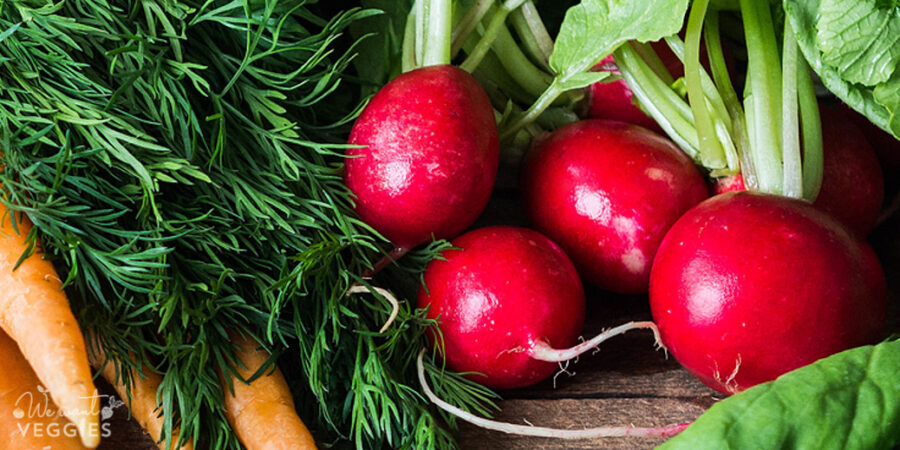Are you determined to keep your spring vegetables fresh this spring season? Great! Honestly, no one looks forward to that walk of shame towards the garbage when you’re throwing away a bunch of rotten veggies. Yuck! You’re wasting money and time when you buy fresh produce that never makes it into your favorite recipe. Yet, you can avoid this situation when you follow the right steps to store spring vegetables.
Read on for tips that will keep your spring vegetables fresh until you’re ready to use them!
Artichokes
Though mysterious, artichokes are another bunch of nutritious spring vegetables that you should be eating. They have a light, buttery taste. When storing artichoke buds, place them inside a plastic bag with holes. Raw, refrigerated artichokes will keep for about 2 weeks. You can also cook them before refrigeration.
Asparagus
If asparagus is missing from your kitchen during spring, has spring really sprung? To be honest, these spring beauties are one of the most exciting things about the spring season. But, it’s no secret that you have to eat those tender stalks quickly. However, life happens, and sometimes you may find that you have to prepare your asparagus later in the week. So, how do you prevent them from becoming limply and mushy?
Before anything else, snip the stem bottoms and perch the stalks in one inch of glass water, just like you do to flowers. Next, place the glass or Mason jar in the fridge and use a plastic bag to cover the Asparagus shoot tops loosely. With preparation, they should last about 4 days in the refrigerator. Occasionally, check the water in the glass. If the water looks cloudy, replace it!
Broccoli
To store your broccoli, find a container with proper air circulation, or swaddle them loosely in a moist paper towel and refrigerate. Broccoli will go bad quickly if stored in an air-tight container, so ensure they have a little air flow.
Morel Mushrooms
With spring heralds like asparagus and ramps soaking in all the spotlight, it’s easy to forget about morel mushrooms. Just kidding. Anyone who’s had a whiff of their earthy smell and flavor can attest that they deserve some love. The best morels are un-shriveled, moist, and have a tinge of rusty or woodsy scent.
For storage, you want to make sure you’re not sealing them in anything. Preferably, after drying up the moisture, store them in a well-ventilated tin, and put them in the fridge. When you store spring vegetables, morels require a little extra care. Because they have all of those little grooves, you’ll want to soak them thoroughly right before you use them.
Ramps
The stifling aroma of these scallion-like spring veggies can significantly ramp-up your appetite (see what we did there?). No doubt, the fact that we only get to enjoy them for a limited period of the year makes them so, so special. But store them poorly, and you’ll have them for an even shorter time.
Therefore, be mindful when buying your ramps from the farmer’s market. Choose fresh, dark-green stems, thinner stalks, and leaves that have zero signs of wilting. Once you get home, bundle them up in a wet cloth or paper towel, then seal them in the crisper drawer of your fridge.
However, there are a few other methods for extending the life of your ramps:
- For instance, if you plan to use them as a seasoning, cut-up the green ramp leaves; leave them in the air to dry for some minutes; and then secure them in an air-tight fridge container. However, note that ramp leaves will start wilting after the third or fourth day sitting in the fridge.
- When storing them for a short period, say 2 days, you should keep them in a refrigerator without cleaning. Alternatively, immerse the bulbs in a cold container of water. For long-term storage, chop off the leaves, dry clean the bulb, then lay them on waxed paper and refrigerate. The wax paper part is to ensure the ramps don’t glue together in your freezer.
- If you enjoy a sour and sweet taste of them, pickling is a brilliant storage hack. Simply pickle the ramp’s stems and bulbs and freeze them in a mason jar.
Spring Onions & Scallions
If you’re still storing your spring onions and scallions at room temperature, don’t be surprised when they wilt sooner than you hoped. Leaving spring onions on your counter in a hot kitchen qualifies as neglect. You’re robbing these poor veggies the chance to contribute to a flavorful, grilled side-dish or vegetable salad!
If you want to be kinder to your spring onions, seal them inside a plastic bag and secure them inside the crisp drawer of your fridge. When you retrieve them a week or two later, they’ll be as fresh as you bought them!
Turnips, Radishes, Rutabagas & Beetroots
Nothing spells “healthy” like beets. And who doesn’t love the searing crunch that radishes add to salads? As for turnips, their crisp flesh when cooked is worth mastering some long-term storage hacks. Fortunately, it doesn’t take much to keep these spring vegetables fresh!
What’s the secret? Separate the roots and stems. And, treat water as the enemy. Unless they are really soiled, avoid washing these spring veggies before you store them. Excessive moisture will spark or accelerate rotting. If you’re harvesting them straight from the garden and have to wash them, make sure you dry them as though your life depends on it. Because it does. Okay, partly.
Next, get rid of any leafy parts and follow the instructions below:
- For turnips, first, swaddle them in a damp paper towel or cloth, then place them inside a perforated plastic bag. Now, seal them inside the vegetable drawer of your fridge, and watch them serve you for months. You can also place them in the coolest, driest spot in your kitchen or home for safekeeping
- Repeat step 1 for all the mentioned veggies.
See? You Can Store Spring Vegetables!
There you have it. Now, that you know how to store spring vegetables, checkout these great spring recipes to help get you started this season. Enjoy spring, and enjoy those fresh, delicious spring vegetables!

Eat Your Veggies
Subscribe here, and we’ll send you a FREE copy of the The Five Day Veggie Plan. This great little ebook includes recipes and a meal plan. It’s our way of saying thanks!


